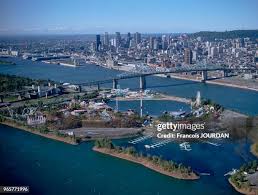
Introduction
Ile Sainte Helene is a vital part of Montreal’s heritage, known for its stunning parks, cultural activities, and historical significance. Situated in the St. Lawrence River, this island attracts both locals and tourists seeking a tranquil escape from the urban hustle. With the ongoing enhancements and cultural festivals, Ile Sainte Helene continues to be relevant in Montreal’s urban landscape.
Historical Context
Originally, Ile Sainte Helene was uninhabited until the 17th century when settlers from France arrived. The island was named after Saint Helena, the mother of the Roman Emperor Constantine I. It gained international recognition during Expo 67, a world fair that celebrated Canadian achievements and showcased the island’s potential as a recreational space.
Activities and Attractions
Today, Ile Sainte Helene offers a wide range of activities for visitors. The island is home to the famous La Ronde amusement park, the Biosphere environmental museum, and various hiking and biking trails. Moreover, year-round events, including the renowned Montreal International Jazz Festival and fireworks competitions, highlight the island’s vibrant cultural landscape.
Environmental Significance
In addition to its recreational offerings, Ile Sainte Helene is critically important from an environmental standpoint. Efforts are ongoing to preserve the natural beauty of the island, including its wildlife and green spaces. The island has become a biodiversity hotspot, where locals can experience the beauty of flora and fauna right in the city.
Conclusion
Ile Sainte Helene stands as a testament to Montreal’s rich history and cultural scene. As the city continues to develop, the island plays a crucial role in providing recreational opportunities and hosting significant events. Its blend of history, nature, and modern attractions makes Ile Sainte Helene a top destination for those seeking to explore the beauty of Montreal.

